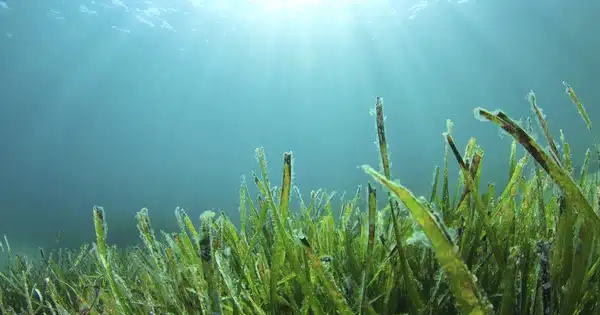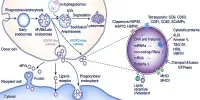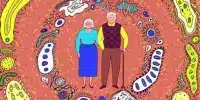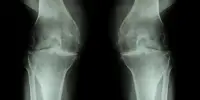Marine habitat-forming organisms are organisms that shape and create habitats within marine ecosystems. Coral reefs, kelp forests, seagrass meadows, and mangroves are examples of these ecosystem engineers. Coral reefs are diverse underwater ecosystems made up of colonies of tiny animals known as coral polyps. They can be found in tropical and subtropical waters all over the world, particularly in the Indo-Pacific, Caribbean, and Red Sea.
Marine habitat-forming species, which include gorgonians, corals, algae, seaweeds, and marine phanerogams, are organisms that help generate and structure underwater landscapes. These are natural havens for other species and contribute biomass and complexity to the seafloor. However, climate change and other human-caused perturbations are currently threatening these key species in marine ecosystems. A new study published in the journal Global Ecology and Biogeography warns that genetic diversity of structural species is not protected even in marine protected areas (MPAs), despite the fact that it is critical for population response and adaptation to changes in the natural environment.
The study was carried out by Laura Figuerola-Ferrando, Cristina Linares, Ignasi Montero-Serra and Marta Pagès-Escolà, from the Faculty of Biology of the University of Barcelona and the Biodiversity Research Institute of the UB (IRBio); Jean-Baptiste Ledoux and Aldo Barreiro, from the Interdisciplinary Centre of Marine and Environmental Research (CIIMAR) in Portugal, and Joaquim Garrabou, from the Institute of Marine Sciences (ICM-CSIC).
Genetic diversity plays a critical role in enhancing the ability of species, populations, and communities to adapt to rapid environmental changes caused by climate change and thus increase their resilience.
Laura Figuerola-Ferrando
Genetic diversity is also a component of biodiversity
Species richness has traditionally been considered in marine biodiversity management and conservation plans. Another important component of biodiversity is genetic diversity, which reflects genetic variation among organisms of the same species and is a determining factor in population adaptive capacity and survival. Despite its significance, genetic diversity has been largely ignored in management and conservation plans.
“Genetic diversity plays a critical role in enhancing the ability of species, populations, and communities to adapt to rapid environmental changes caused by climate change and thus increase their resilience,” says study first author Laura Figuerola-Ferrando.
“However, – she continues – so far, the vast majority of marine protected areas are implemented based on the presence of several species and habitats, without considering their genetic diversity. Another example would be the red list of the International Union for Conservation of Nature (IUCN), which does not consider genetic diversity either.”
“In recent years, the need to focus conservation efforts on genetic diversity protection has been reinforced. Technological progress in the massive development of different techniques to determine genetic diversity (for example, through the use of microsatellites or small DNA fragments), as well as their low cost, can help to include genetic diversity in management and conservation plans,” says the researcher from the University of Buffalo’s Department of Evolutionary Biology, Ecology, and Environmental Sciences.
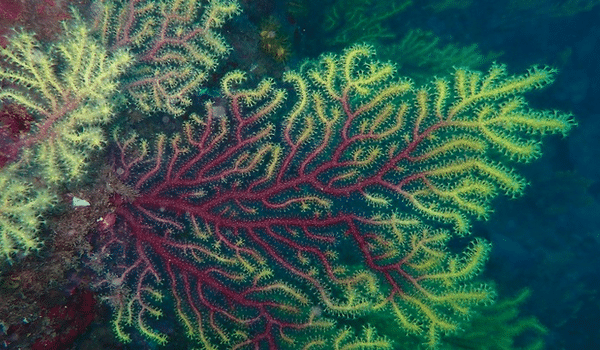
From the northwest Atlantic to the Gulf of Guinea
The research employs macrogenetic techniques to identify general genetic patterns in a variety of marine species at large spatial scales. The authors examined data from a global database containing genetic diversity information (based on microsatellites) for over 9,300 populations of 140 species from various marine regions around the world.
The findings outline a reference scenario of genetic patterns in marine habitat-forming species (corals, macroalgae, marine phanerogams, and so on) that could be useful in improving marine life management and conservation plans.
The northwest Atlantic provinces and the Bay of Bengal have been identified as having the highest genetic diversity in marine landscape species. The Mediterranean has also shown quite high values (above the global average). The Gulf of Guinea and the southwest Atlantic, on the other hand, have the lowest levels of genetic diversity.
The findings also show a link between genetic diversity and species richness in animal and plant marine habitat-forming species. However, the paper warns of a concerning finding: the Network of Marine Protected Areas (RAMP) in large oceanic ecoregions does not preserve areas with the greatest genetic diversity of marine habitat-forming species.
A new pattern of equatorial biodiversity at the poles
The authors also discovered a distinct pattern in the genetic diversity distribution of marine habitat-forming species that differs from previous models. “This is a bimodal latitudinal pattern: it is a complex biogeographic model that implies that if we model how the genetic diversity of these species varies with latitude, we find two peaks in temperate zones and a small dip in genetic diversity at the equator,” says ICREA Academia professor Cristina Linares (UB-IRBio), one of the study’s coordinators along with Jean-Baptiste Ledoux (CIIMAR).
This scientific discovery is significant because it was previously assumed that the distribution of biodiversity on the planet followed a unimodal pattern, with maximum values at the equator and decreasing towards the poles. “This isn’t always the case, particularly when it comes to species diversity in marine ecosystems. In the case of benthic species, for example, this pattern is biomodal rather than unimodal in terms of both species richness and genetic diversity,” Cristina Linares explains.
“In our study, the bimodal latitudinal pattern is influenced by taxonomy: in the used model, we found statistically significant differences between animal species (more genetic diversity) and plant species (less genetic diversity). Furthermore, if we explore the latitudinal pattern separating animal and plant species, we can see that a bimodal pattern continues to be observed in animals, but the same cannot be said for plants,” adds researcher Jean-Baptiste Ledoux (CIIMAR).
Genetic diversity: improving conservation management plans
The study’s findings emphasize the importance of including genetic diversity in population management and conservation plans around the world. “The ‘Kunming-Montreal Global Biodiversity Framework’ within the Convention on Biological Diversity (CBD/COP/15/L25, 2022) has just reinforced the importance of having genetic diversity in biodiversity management and conservation plans. We believe that the baseline on genetic diversity patterns in marine habitat-forming species defined by our work can be very relevant in this context,” says Jean-Baptiste Ledoux.
This study also reveals that the Mediterranean and Atlantic regions are among the most present in the scientific literature used in this work on macrogenetic patterns of deep-sea structural species.
